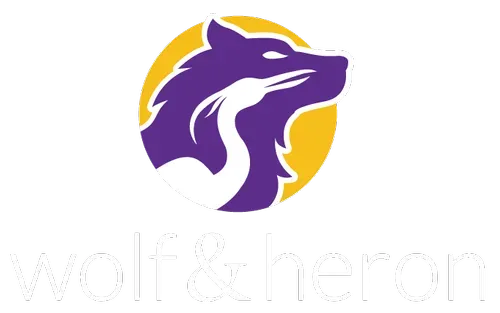Unlocking The Power of Process Conversations

Recently Stephanie’s coaching client, Haley, came to a session with the challenge of wanting to find ways to reclaim her time. She spends 7-8 hours a day in meetings, and therefore finds it difficult to actually accomplish anything. She says that because she’s so overbooked, she finds herself multitasking during her meetings, which ends up compromising both her ability to be fully present and her ability to do good work in and outside of those meetings.
She brought this issue to Stephanie hoping to learn more about how to protect her time. It quickly became apparent that part of her frustration was that she believed many of her meetings to be ineffective and inefficient.
One meeting was a particular sticking point for her. It was a 2.5 hour standing meeting scheduled for every other week that seemed to have three distinct parts: A roundtable of status updates, some informal socialization and chit-chat, and some time spent solving a problem as a group.
Haley felt that each portion of this meeting accomplished a different objective:
- The roundtable updates helped the group identify synergies, collaboration opportunities, and share resources.
- The socialization time was important for team building.
- The time spent working together as a group was good for tackling problems that required their joint expertise.
Haley believed all three of these objectives were important, but also thought they could be accomplished more efficiently and in a way that played better to the diverse strengths of the team. Being proactive, Haley had already figured out a better way to run the meeting based on the objectives she identified. Now she just needed to figure out how to “change the meeting” without overstepping. She wasn’t technically in charge of the meeting, after all.
Haley sensed that charging into her boss’s office with a new plan for how he should run that meeting wasn’t the right approach. She knew the arguments she would make, but imagined her boss becoming defensive. She wasn’t sure how to present the idea to him in a way that would be welcome. This is when Stephanie mentioned what she calls a Process Conversation.
What is a Process Conversation?
Process Conversations focus on alignment around HOW work gets accomplished. This is different from the typical conversations at work about WHAT needs doing. Often, HOW work will get done is rarely discussed. And if it is considered with any kind of intention, it’s usually considered by a leader in isolation, who believes that how the work is done should be a decision they make unilaterally.
Process Conversations are great opportunities for leaders to inspire others, generate buy-in, and drive engagement. AND they’re an access point through which to engage and inspire UP the chain of command as well.
Once Haley decided to have a process conversation with her supervisor, they discussed what that would look like.
Align on the Problem and Goals
Aligning on the problem or opportunity statement is the first step to any change. In Haley’s case, she had identified this biweekly team meeting had potential to be more efficient. Her first task was to verify that other people agreed with her problem statement and get their perspective on the purpose of the meeting.
At the next meeting, she asked for time on the agenda and shared both the problem statement she had identified and purposes of the meeting as she saw it. The team was on board with the idea that a change would be beneficial, and spent some time aligning on what the goals of the meeting currently were. With this as a starting point, she had the engagement (even from her boss!) that she needed to step further into a discussion about how the meeting itself should run.
Ask Process-Oriented Questions
Part of what makes a discussion most productive is framing up powerful, open-ended questions. Haley went to work preparing a series of questions that would help the group align on how the meeting would be most efficient. Here are some that she shared:
- How would you rank the relative importance of each of the meeting objectives?
- What should we focus on if we can only accomplish one thing?
- How important is it that all three objectives are met in THIS meeting?
- How should we set things up for you to bring your best ideas to a brainstorming session?
- How might we structure our roundtable updates to run more quickly?
- What do we discuss during the meeting that might make more sense as an email?
Notice how these questions are aimed at identifying opportunities for efficiency as well as pulling apart what brings out the best in each team member. Of course there will be different perspectives, and each team member will have different answers. What’s important is that the conversation opens the team up to identifying ways of working together that could be more efficient, effective, and productive than the status quo… and that’s always a win.
Align on a Process
In Haley’s case, she had one-on-one conversations with each individual on the team in order to maximize the psychological safety and ideally collect the most candid feedback possible. These conversations don’t necessarily have to be one-on-one, though. Depending on the group dynamics, it may be useful to ask the questions collectively.
Haley found her one-on-one process conversations to be extremely eye-opening. After discussing many of these questions with each team member individually, she could identify where the team already had plenty of alignment and where the team had different points of view. She brought to the next team meeting a shortlist of the topics that the team needed to align on and a summary of the points on which they already agreed.
In the end, the team agreed that the 2.5 hours every other week wasn’t necessary; they all appreciated time back on their calendars. Instead they broke the meeting into three separate events, ultimately shortening the meeting and taking some things offline
Keep it Iterative
A key component of all process development is to remember that it should be iterative. After they agreed on how they would run the meeting, Haley asked a few final and crucial questions:
- How will we evaluate whether or not this is working?
- When should we revisit this conversation to tweak the process again?
When HOW you work is open to discussion, you’re able to find opportunities for efficiency, increased effectiveness, and more engagement in WHAT you do. And by keeping it iterative, you have the space to experiment. If you’re not sure how to make a process better, try one idea for a while, and then try another.
The big win for Haley in her case, wasn’t just the new meeting format they came up with, it was that she was able to address a time-wasting problem, with support and without objections. Change creates disruption and she could have easily created interpersonal issues if she had proceeded with her initial idea of just presenting her plan to her supervisor. When you use a process conversation, you get buy-in and often a better informed outcome.
Take a look at the way you work. What processes are frustrating you? What might a process conversation look like for you?
Recent Posts





